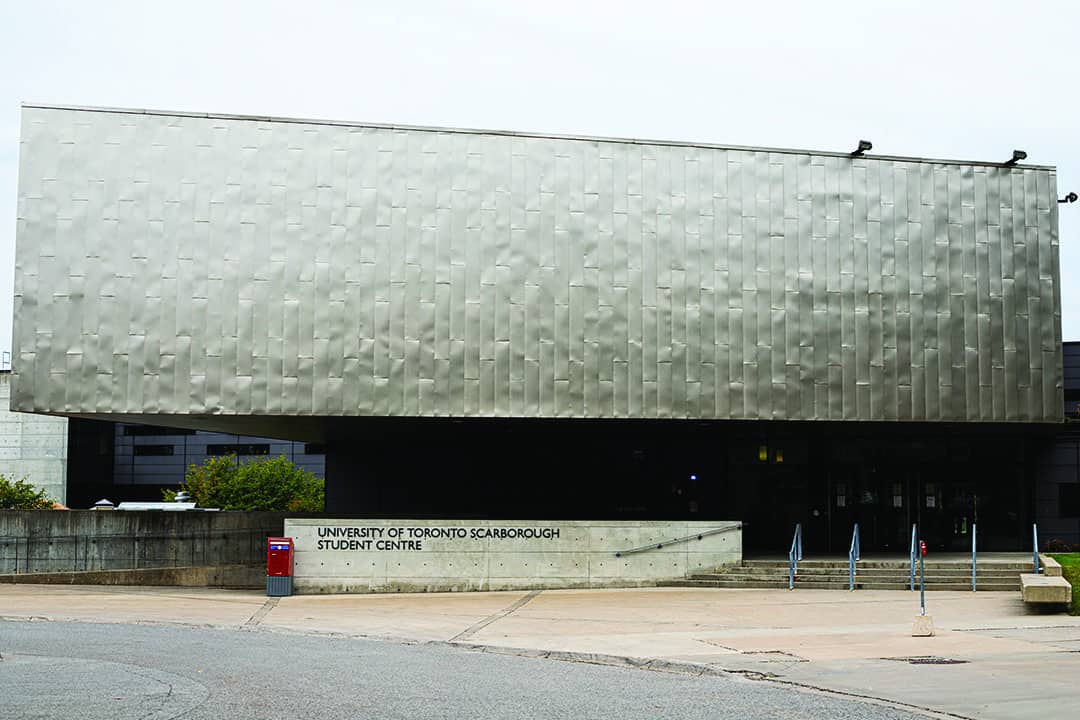I can still remember standing at Kennedy station waiting for the 905 Eglinton East Express bus to appear on early cold mornings in January 2020. I would take the train west toward Kennedy, the primary TTC station that connects Scarborough to the rest of the city.
While waiting for the bus to appear on winter mornings, I would notice how eager students were to get to school. Individuals would be rushing into Kennedy station, exiting buses, pushing through the crowds, and trying to reach the train. Some were trying to depart from Scarborough to enter other parts of the city, and many were coming into Scarborough.
From Kennedy station, students had one bus option to get to school: the 905 Eglinton East bus. Students attending UTSC, Centennial College, and a few local high schools — as well as some community residents — would all compete for the best seats on the bus. The buses became overcrowded.
Major commuting concerns
Throughout the pandemic, the TTC implemented dedicated bus lanes for popular bus corridors around the city. Fortunately, one of those bus corridors was the 905 Eglinton East bus route. Even during the pandemic, this route played an essential role in ridership around Scarborough. After months of having this dedicated bus lane in Scarborough, it was found that the bus route reduced the travel time by two to five minutes on average.
If the 905 Eglinton East dedicated bus lane continues to exist in Scarborough, it would help UTSC students return to campus this January. It could allow them to get to school with faster and more reliable commute times. Before the dedicated bus lane, students like me would be waiting on the bus to get through traffic, which would lead to the bus ride being very long and exhausting. I believe students deserve to commute to school without feeling exhausted before they reach campus.
However, many students may not be ready to return to campus. Improvements have been made — like the dedicated bus lane — but there are still many other issues that students will have to face when commuting to school.
UTSC students are primarily concerned about the Scarborough RT, also known as the SRT or TTC Line 3. The SRT faces service issues because it cannot handle the snowfall during the winter months. This may cause commuter students to face delays and to have to look for shuttle buses, which can cause more issues. Furthermore, the TTC is not shutting down the SRT to build a new extension until 2023, meaning this issue will remain unfixed for a while.
Another concern is the TTC’s staffing shortages and service changes due to its COVID-19 vaccine mandate. There have been more than 50 routes impacted across the city, and the 38 Highland Creek bus, which connects many UTSC students to campus, is facing service shortages. If this matter is not resolved, UTSC commuters will have to wait for buses longer in the winter.
Some non-UTSC students may wonder why we cannot just drive to school instead of taking public transit. Well, the reality is that student parking can cost quite a bit, and a yearly parking pass is about $955.59. Many students can save more money by using public transportation.
How UTSC students can make their commute easier
Returning to school will not be easy for students like me who commute to UTSC. Many of us have found comfort during the pandemic in saving that hour of commuting to do other tasks like studying, working out, or relaxing. However, it is important to remember the things that in-person learning provided us with. It allowed students to connect with professors, make friends, ask questions, and take part in fun activities.
If you or your friends have access to a car, consider carpooling, which will allow you to not only split the cost of a parking pass but also socialize with friends prior to classes.
However, if you must take public transit, try to avoid rush hour and pick a time when there are fewer passengers. This way, you can enjoy the long ride with a seat and not feel like it is a competition to get on the bus. Try to make a friend as well so that you can socialize with someone on the commute, which can make the trip go by faster.
Also, while there is nothing wrong with sleeping on a bus, I recommend that you sleep earlier on days when you are aware you have to be at school early. This will make you feel less exhausted and ready to combat the long commute.
Finally, many transit issues persist in Scarborough, impacting commuting. An advocacy group called TTCriders advocates for better transit and has been urging the government for better transit in Scarborough. Students should get involved and let their voices be heard to help make a change.
UTSC commuters are right to have concerns, but as long as UTSC is calling for a full in-person return, commuters must make the best of their circumstances. Commuting to campus may be hard to adjust to in January, but so was online learning. We must stay hopeful that transit will develop and grow for the better in Scarborough, benefiting commuter students.
Anika Munir is a third-year public policy, city studies, and public law student at UTSC. She is the director of human geography on the Scarborough Campus Students’ Union and the co-president of the Geography and City Studies Student Association.


